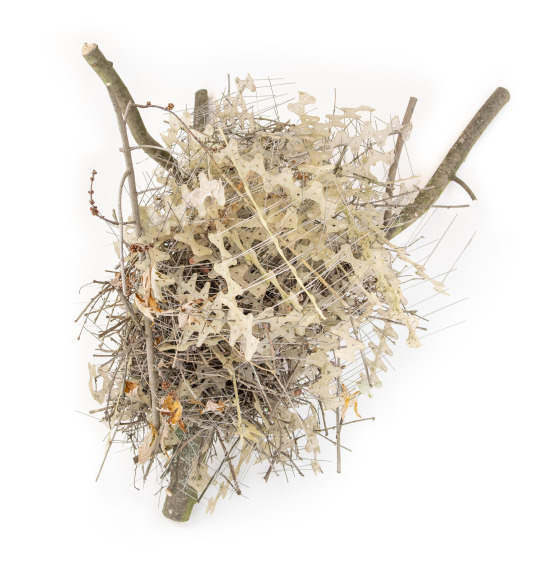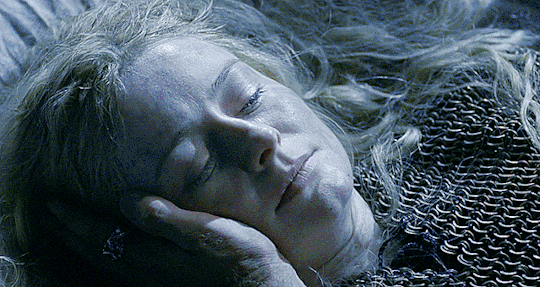#urban lives
Explore tagged Tumblr posts
Text
Homemaking, gardening, and self-sufficiency resources that won't radicalize you into a hate group

It seems like self-sufficiency and homemaking skills are blowing up right now. With the COVID-19 pandemic and the current economic crisis, a lot of folks, especially young people, are looking to develop skills that will help them be a little bit less dependent on our consumerist economy. And I think that's generally a good thing. I think more of us should know how to cook a meal from scratch, grow our own vegetables, and mend our own clothes. Those are good skills to have.
Unfortunately, these "self-sufficiency" skills are often used as a recruiting tactic by white supremacists, TERFs, and other hate groups. They become a way to reconnect to or relive the "good old days," a romanticized (false) past before modern society and civil rights. And for a lot of people, these skills are inseparably connected to their politics and may even be used as a tool to indoctrinate new people.
In the spirit of building safe communities, here's a complete list of the safe resources I've found for learning homemaking, gardening, and related skills. Safe for me means queer- and trans-friendly, inclusive of different races and cultures, does not contain Christian preaching, and does not contain white supremacist or TERF dog whistles.
Homemaking/Housekeeping/Caring for your home:
Making It by Kelly Coyne and Erik Knutzen [book] (The big crunchy household DIY book; includes every level of self-sufficiency from making your own toothpaste and laundry soap to setting up raised beds to butchering a chicken. Authors are explicitly left-leaning.)
Safe and Sound: A Renter-Friendly Guide to Home Repair by Mercury Stardust [book] (A guide to simple home repair tasks, written with rentals in mind; very compassionate and accessible language.)
How To Keep House While Drowning by KC Davis [book] (The book about cleaning and housework for people who get overwhelmed by cleaning and housework, based on the premise that messiness is not a moral failing; disability and neurodivergence friendly; genuinely changed how I approach cleaning tasks.)
Gardening
Rebel Gardening by Alessandro Vitale [book] (Really great introduction to urban gardening; explicitly discusses renter-friendly garden designs in small spaces; lots of DIY solutions using recycled materials; note that the author lives in England, so check if plants are invasive in your area before putting them in the ground.)
Country/Rural Living:
Woodsqueer by Gretchen Legler [book] (Memoir of a lesbian who lives and works on a rural farm in Maine with her wife; does a good job of showing what it's like to be queer in a rural space; CW for mentions of domestic violence, infidelity/cheating, and internalized homophobia)
"Debunking the Off-Grid Fantasy" by Maggie Mae Fish [video essay] (Deconstructs the off-grid lifestyle and the myth of self-reliance)
Sewing/Mending:
Annika Victoria [YouTube channel] (No longer active, but their videos are still a great resource for anyone learning to sew; check out the beginner project playlist to start. This is where I learned a lot of what I know about sewing.)
Make, Sew, and Mend by Bernadette Banner [book] (A very thorough written introduction to hand-sewing, written by a clothing historian; lots of fun garment history facts; explicitly inclusive of BIPOC, queer, and trans sewists.)
Sustainability/Land Stewardship
Braiding Sweetgrass by Robin Wall Kimmerer [book] (Most of you have probably already read this one or had it recommended to you, but it really is that good; excellent example of how traditional animist beliefs -- in this case, indigenous American beliefs -- can exist in healthy symbiosis with science; more philosophy than how-to, but a great foundational resource.)
Wild Witchcraft by Rebecca Beyer [book] (This one is for my fellow witches; one of my favorite witchcraft books, and an excellent example of a place-based practice deeply rooted in the land.)
Avoiding the "Crunchy to Alt Right Pipeline"
Note: the "crunchy to alt-right pipeline" is a term used to describe how white supremacists and other far right groups use "crunchy" spaces (i.e., spaces dedicated to farming, homemaking, alternative medicine, simple living/slow living, etc.) to recruit and indoctrinate people into their movements. Knowing how this recruitment works can help you recognize it when you do encounter it and avoid being influenced by it.
"The Crunchy-to-Alt-Right Pipeline" by Kathleen Belew [magazine article] (Good, short introduction to this issue and its history.)
Sisters in Hate by Seyward Darby (I feel like I need to give a content warning: this book contains explicit descriptions of racism, white supremacy, and Neo Nazis, and it's a very difficult read, but it really is a great, in-depth breakdown of the role women play in the alt-right; also explicitly addresses the crunchy to alt-right pipeline.)
These are just the resources I've personally found helpful, so if anyone else has any they want to add, please, please do!
#homemaking#homemaking resources#gardening#urban gardening#self sufficiency#self sufficient living#sustainability#sustainable living#homesteading#nontrad homemaker#nontrad housewife#urban homesteading#solarpunk#cottagecore#kitchen witch#kitchen witchcraft#crunchy to alt right pipeline#book rec#book recommendations#resource#long post#mine#racism tw#racism mention#transphobia tw#transphobia mention
29K notes
·
View notes
Text
Just curious about everyone’s thoughts on this as I’ve been thinking about urban wildlife a lot lately
#This is probably very regional but I would love to hear about your country’s parking lot bird#birds#urban wildlife#polls#the flock of ibisis that live near my work truly get me through the day
31K notes
·
View notes
Text

#photography#graveyard#cemetery#rural photography#rural decay#rural gothic#rural america#urban photography#urban exploration#southern gothic#female hysteria#living dead girl#5thcult
836 notes
·
View notes
Text







Maison de Verre, Paris - Bernard Bijvoet & Pierre Chareau
#Bernard Bijvoet & Pierre Chareau#architecture#design#building#modern architecture#interiors#minimal#house#house design#modern#modernist#classic#timeless#modernist architecture#glass block#glass wall#stairs#industrial#book shelves#living room#piano#paris#beautiful architecture#cool architecture#beautiful houses#urban#courtyard#light#steel#architecture blog
689 notes
·
View notes
Text
Begging some of y'all to realize that rural people are human beings too, not a different species that's inherently evil
#girl we live out here#just because you cant imagine a life outside your insulated white ass urban pnw/bay area existence doesnt mean it doesnt exist
1K notes
·
View notes
Text
Yes, it has dolls.
Yes, it has vore.
Yes, it has themes and motifs.
YES, it has the only "sanity" mechanic I have ever seen in a tabletop game or OTHERWISE that effectively and meaningfully portrays the way compounding stress effects someone. But what TRULY elevates it to a master piece is the fact that, YES! It, with a single mechanic, fixes the problem nearly every other ttrpg which thinks it can handle mysteries struggles with.
I am not exaggerating when I tell you I wholeheartedly believe that A.N.I.M.'s Eureka will be the next indie darling in the TTRPG scene.
https://anim-ttrpg.itch.io/eureka-urban-investigative-fantasy-ttrpg
The window to say you "liked it before it was cool" is quickly closing. Click the link.
#eureka: investigative urban fantasy#indie ttrpg#ttrpg community#eureka#ttrpg#tabletop#indie rpg#indie games#indie roleplay#living doll#tabletop roleplaying#roleplaying games#A.N.I.M.#mystery#noir#mystery rp#dnd#dungeons and dragons#5e#this has been sitting in my drafts for ages sorry for the delay
381 notes
·
View notes
Text

Maison Martin Margiela Spring Summer 1994, photography by Tatsuya Kitayama
#martin margiela#maison margiela#fashion#style#minimal aesthetic#minimal fashion#minimalism#esthetics#aesthetics#life#classic style#fashion photography#minimal#urban fantasy#minimalistic#photo of the week#editorial#photooftheday#urban art#living in the moment#photoshoot#archive fashion#seduce my mind#minimalist style#minimalist#aesthetic#esthétique#photography#captured#black and white
597 notes
·
View notes
Text


THE BOYS (2019– )
#theboysedit#the boys#tvedit#chewieblog#userbbelcher#useroptional#cinemapix#mine*#sd*#karl urban#antony starr#homelander#billy butcher#their tiny interactions are everything for me#god he tries so hard but he is excited to see *william* :'D#oh boi get a room and let everyone live a peaceful life#butchlander
3K notes
·
View notes
Text

happy pride month from peepaw harkness and the torchwood team 🏳️🌈🏳️⚧️
#listen. jack was born in the 51st century. he hung out in 1941 and the was stuck living through the entire 20th century.#he’s (at least partially) a part of the great and silent generations. this is a 98 y/o queer war vet in a 28 y/o’s body#he tells stories about the war and he literally had a grandson. he’s earned peepaw status#he was heavily involved in queer culture throughout the decades. he does not know what a bussy is. these two things can coexist <3#despite his body and physicality jack is an elder queer. heavy emphasis on elder#do not let him surf the web unsupervised. if he finds out about twitter or urban dictionary he will be insufferable#torchwood#jack harkness#captain jack harkness#ianto jones#my edit
497 notes
·
View notes
Text

#no home#haejoon in college like sorry hangon i have a call to take#my unstable friend is calling me#i have to make sure hes not like in a ditch somewhere#eunyung: yeah i quit my job and became a ranch hand at this farm and i think ive really found myself except my coworkers are cunts#but one of them lets me hit her vape pen which is cool oh but yeah i live in the country now and theres like jackshit to do#so ive gotten really into urban exploration except i think i inhaled spores or something in one my throats been scratchy all week#but i get paid under the table so i dont have health insurance right now but its whatever i got those fancy cough drops for it#haejoon: thats nice. i went for a walk yesterday#i think they go like 3 months without talking until either haejoon goes hey man whats up <- concerned or eunyung sends him a 10 minute long#voice memo about all the shit hes been up to
316 notes
·
View notes
Text

Shady Grove Metro Center
Washington D.C.
Bob Cronk
#washington dc#metrorail#metro#shady grove#subway#bob cronk#bob cronk photography#nikon#urban architecture#urban photography#urban explorers#urban living#original photography#original photographers#photographers on tumblr#photography on tumblr#commuting
162 notes
·
View notes
Text
Tell me about your general region (continent or country) and living density (rural enough that your nearest neighbor is eight miles away, suburban where there's nothing but single-family housing as far as the eye can see, a city with tens of thousands of people per square mile, etc) in the tags!
Metric measurements rounded to the nearest half meter, then nearest tenth of a kilometer.
According to the USDA, a food desert is:
A tract with at least 500 people, or 33 percent of the population, living more than one-half mile (urban areas) or 10 miles (rural areas) from the nearest supermarket, supercenter, or large grocery store.
#polls#phoenix polls#food#food deserts#suburbia#rural#urban#anyway I live in suburban hell and my nearest grocery store is about 45 minutes away by foot. and it's too dangerous to bike. so.#always gotta drive
948 notes
·
View notes
Text
When you AU too hard to the point that it’s an actual story and you gotta worry about time lines and shit

Both Urban Kiju and One Spark blew up this year, Urban Kiju was made last January and One Spark was made back in 2019. Both are both my rock and the bane of my existence. The fuck you mean my Megop fan child has a story arc now? The fuck you mean my Godzilla x Mothra art actually has a fan base? THE FUCK YOU MEAN IM GETTING PAID TO DRAW MONSTERS AND ROBOTS FUCKING???
But in all seriousness, thank you for all the support this year. None of this would be possible if I didn’t have people willing to deal with my ADHD ass drawing habits
#digital art#drawing#illustration#artists on tumblr#fanart#urban Kiju#one spark au#transformers#Godzilla#transformers au#Godzilla au#what is my life now#I really hope I’m actually able to make a living off of this#thank you guys for everything#happy holidays
152 notes
·
View notes
Text
Humans are so cute. They think they can outsmart birds. They place nasty metal spikes on rooftops and ledges to prevent birds from nesting there.
It’s a classic human trick known in urban design as “evil architecture”: designing a place in a way that’s meant to deter others. Think of the city benches you see segmented by bars to stop homeless people sleeping there.
But birds are genius rebels. Not only are they undeterred by evil architecture, they actually use it to their advantage, according to a new Dutch study published in the journal Deinsea.
Crows and magpies, it turns out, are learning to rip strips of anti-bird spikes off of buildings and use them to build their nests. It’s an incredible addition to the growing body of evidence about the intelligence of birds, so wrongly maligned as stupid that “bird-brained” is still commonly used as an insult...
Magpies also use anti-bird spikes for their nests. In 2021, a hospital patient in Antwerp, Belgium, looked out the window and noticed a huge magpie’s nest in a tree in the courtyard. Biologist Auke-Florian Hiemstra of Leiden-based Naturalis Biodiversity Center, one of the study’s authors, went to collect the nest and found that it was made out of 50 meters of anti-bird strips, containing no fewer than 1,500 metal spikes.
Hiemstra describes the magpie nest as “an impregnable fortress.”

Pictured: A huge magpie nest made out of 1,500 metal spikes.
Magpies are known to build roofs over their nests to prevent other birds from stealing their eggs and young. Usually, they scrounge around in nature for thorny plants or spiky branches to form the roof. But city birds don’t need to search for the perfect branch — they can just use the anti-bird spikes that humans have so kindly put at their disposal.
“The magpies appear to be using the pins exactly the same way we do: to keep other birds away from their nest,” Hiemstra said.
Another urban magpie nest, this one from Scotland, really shows off the roof-building tactic:

Pictured: A nest from Scotland shows how urban magpies are using anti-bird spikes to construct a roof meant to protect their young and eggs from predators.
Birds had already been spotted using upward-pointing anti-bird spikes as foundations for nests. In 2016, the so-called Parkdale Pigeon became Twitter-famous for refusing to give up when humans removed her first nest and installed spikes on her chosen nesting site, the top of an LCD monitor on a subway platform in Melbourne. The avian architect rebelled and built an even better home there, using the spikes as a foundation to hold her nest more securely in place.
...Hiemstra’s study is the first to show that birds, adapting to city life, are learning to seek out and use our anti-bird spikes as their nesting material. Pretty badass, right?
The genius of birds — and other animals we underestimate
It’s a well-established fact that many bird species are highly intelligent. Members of the corvid family, which includes crows and magpies, are especially renowned for their smarts. Crows can solve complex puzzles, while magpies can pass the “mirror test” — the classic test that scientists use to determine if a species is self-aware.
Studies show that some birds have evolved cognitive skills similar to our own: They have amazing memories, remembering for months the thousands of different hiding places where they’ve stashed seeds, and they use their own experiences to predict the behavior of other birds, suggesting they’ve got some theory of mind.
And, as author Jennifer Ackerman details in The Genius of Birds, birds are brilliant at using tools. Black palm cockatoos use twigs as drumsticks, tapping out a beat on a tree trunk to get a female’s attention. Jays use sticks as spears to attack other birds...
Birds have also been known to use human tools to their advantage. When carrion crows want to crack a walnut, for example, they position the nut on a busy road, wait for a passing car to crush the shell, then swoop down to collect the nut and eat it. This behavior has been recorded several times in Japanese crows.
But what’s unique about Hiemstra’s study is that it shows birds using human tools, specifically designed to thwart birds’ plans, in order to thwart our plans instead. We humans try to keep birds away with spikes, and the birds — ingenious rebels that they are — retort: Thanks, humans!
-via Vox, July 26, 2023
#birds are literally learning how to better live/survive alongside us#this is like. actually kind of remarkable. and the technique is spreading including to other species.#is this hopepunk? it kinda feels like hopepunk to me.#animals are literally learning how to use our attempts to get rid of them against us#that's kind of amazing#and also VERY encouraging re: life's innate resilience#crows#magpie#corvid#crow#bird#bird nest#bird nerd#bird news#adaptation#urban animals#ornithology#climate adaptation#kinda#good news#hope#hope posting#hopepunk#animal intelligence#wildlife#animals are awesome
1K notes
·
View notes
Text







House in Nishinokyo Hills, Naro, Japan - Waro Kishi
#Waro Kishi#architecture#design#building#modern architecture#interiors#minimal#house#house design#modern#minimalist#contemporary#contemporary architecture#cool houses#cool design#beautiful home#light and shadow#render#metal roof#timber cladding#japan#japanese house#japanese architecture#design blog#glass#urban#garden#courtyard#living room#stairs
241 notes
·
View notes
Text







The Return of the King in 4k
The House of the Healing
#lotr#aragorn#eowyn#eomer#lord of the rings#lotredit#rotk#the return of the king#return of the king#viggo mortensen#miranda otto#karl urban#4k#4k gif#such a beautiful scene#should have been in the cinema version#and the music#live tyler singing is eteral
839 notes
·
View notes